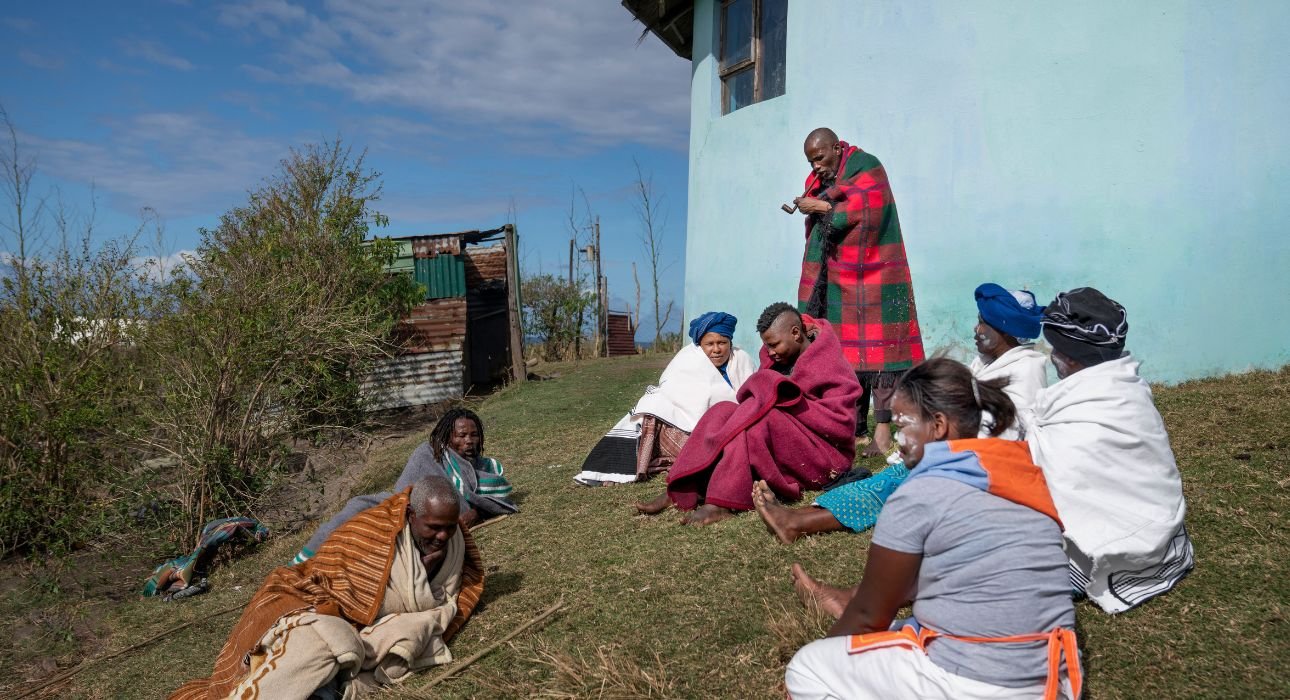India, a developing nation, finds itself battling a mental health crisis. Owing to the growing population’s burden of mental health issues, which can not be addressed with the limited resources available (Meghrajani et al., 2023). One might argue that advancements in the field of mental healthcare are aimed at resolving the crisis, but they are concentrated largely towards urban metropolitan cities.
Approximately 68.84% of India’s population lives in rural areas (India Rural Population, n.d.), which remain devoid of mental health care resources. Upon exposure to the statistics of populations, minorities and geographies, the plight of mental health care in India becomes more concerning. These stark realities suggest the presence of significant barriers in mental health care access, especially in the case of minority communities that traverse a plethora of socioeconomic obstacles. The following article aims to explore the barriers that contribute to the inaccessible nature of mental health care in India.
Read More: Understanding Mental Health Governance in India
Systemic Barriers to Mental Health Care
When referring to the obstacles faced by rural and minority communities in their quest for accessible and adequate mental healthcare, the very system, which is supposed to cater to them, is inherently flawed. The fundamental structure of the mental healthcare system adds to the barriers faced by such communities. It continues to marginalise the rural minorities, failing to address this unique population.
Read More: Therapy in Marginalised Communities: Cultural Competency or Cultural Humility
1. Inadequate Infrastructure in Rural Areas
The glaring treatment gap that prevails only allows 20% Indians to receive active mental health care intervention (Murthy, 2017). This gap in treatment is a product of the lack of mental health care infrastructure in rural regions. This does not only extend to places where one can opt for mental health care, but also to the lack of adequate tools and professionals to disseminate the care. Most hospitals and community centres fail to staff mental health care professionals. Primarily, mental health care as a concept is not integrated into the health care system aimed towards rural regions and minorities.
2. Urban Centric Development
While the government does take efforts towards accessible mental healthcare, most of its resources are heavily skewed towards the urban population. Most hospitals, private practitioners and advanced care facilities that can offer adequate, well-rounded mental health care are located in metropolitan or tier two cities, leaving rural populations without access to even basic services (Mathur et al., 2024).
3. Lack of Monetary Resources
Under the Ministry of Health and Family Welfare, according to the financial budget, mental health funding for India stands at 1% of the ministry’s budget, despite inflation and the growing population (Mahashur, 2025). The lack of monetary resources allocated by the government itself is not only severely concerning for the urban population but also exacerbates the issues faced by the rural population. The severely underfunded nature of mental healthcare in India in totality poses a great threat to the population.
3. Poor Implementation of Mental Health Policies
With the introduction of the National Mental Health Programme and District Mental Health Programmes, among many more, along with schemes such as Tele-MANAS, mental healthcare should become more accessible in rural regions. However, the pen and paper implementation of such revolutionary ideas has not translated into real-life performance. Simultaneously, these schemes need to be supported by digital infrastructure and awareness, which are amiss.
4. Lack of Professionals
In totality, India faces a severe shortage of qualified mental health professionals on account of the novelty of the field, lack of awareness and lack of standardisation in education endeavours. The scarcity not only affects the urban medical hubs, but is more evident in rural and remote areas. The report encapsulating the burden of mental health disorders across the states of India suggests that there is a significant geographical imbalance in the distribution of mental health care professionals between urban and rural areas, with rural areas having limited to no access to such services (Sagar et al., 2019)
Cultural Barriers in Rural and Minority Communities
While fundamental aspects of the mental health care system in India make it inaccessible to individuals in minorities and rural regions, there are also invisible obstacles that are more deeply rooted in the attitudes of these individuals. These obstacles are shaped by beliefs, values, historical experiences, and social dynamics in communities. Especially in rural India among minority communities, these factors play a more important role as such communities are more aligned towards their beliefs and traditions. They may also reject the idea of mental health care and fail to recognise mental issues, which may prove to be a bigger barrier.
Read More: Mental Health and Satisfaction in Tribal Communities: A Contradictory Story of Resilience
1. Stigma
The stigma that surrounds mental health issues remains one of the most powerful discouragements to seeking care in India. While efforts to spread awareness have impacted urban populations, the rural population remain steadfast in their stigmatised and shameful approach towards mental illnesses. It is often believed in rural minorities that mental illness is equivalent to psychopathology, divine punishment or even weakness (The History of Mental Illness, 2024). The lack of awareness about psychological well-being, especially among rural populations, has contributed to such deep-rooted stigma around mental healthcare that individuals often feel ashamed to seek it. Due to the fear of social exclusion, even when an individual indulges in mental health care, they often do so in secrecy.
2. Cultural Explanations
Rural minority communities are deeply integrated with their cultural and traditional beliefs and values and hold them in high regard. They may even disregard scientific models and view mental health illnesses through cultural and spiritual frameworks. In many minority communities, mental illness can be explained as a form of possession and religious punishment.
3. Distrust of the System
Rural minorities have often been victims of discrimination in a wide variety of settings which including health care. Experiences of marginalisation and discrimination allow them to view health institutions with suspicion, and an environment of distrust to prevail. They may further opt out of adequate health care due to perceptions shaped by earlier experiences (Kumar et al., 2025).
4. Patriarchal Attitudes
A patriarchal society dominates rural areas of India, where women are subjugated to conditions that may increase the risk of mental illness. The roots of patriarchy in rural communities run so deep that they obstruct actual progress and threaten women’s well-being. Forms of abuse and abandonment remain rife in the rural communities, further deepening women’s predicament. Those who experience anxiety, depression, or even postpartum disorders may be ignored or silenced. Women may also be dismissed for being overly emotional, further suppressing their cries for mental health care (Srivastava & Gawarle, 2024).
5. Lack of culturally adapted mental health services
Indian mental healthcare has only recently gained traction and remains deeply rooted in Western ideology and thought. Despite the novelty and impact of these theories, they failed to align with different cultures across the globe, creating significant dissonance. Intervention strategies may even diminish the significance attributed to aspects of an individual’s life that are not prevalent in Western ideology.
SocioEconomic Challenges
While the socioeconomic challenges faced by the rural population in India have significantly declined, they still prevail. Over 7.2% of the rural population falls below the poverty line, suggesting the presence of a wide variety of challenges other than health care (Rajora, 2024). Especially in rural minority communities, which may face social challenges, such as discrimination based on caste, socio-economic challenges, which include unemployment, lack of education, poverty and more, prevail in greater capacity. These challenges in meeting basic requirements allow mental healthcare to remain ignored or suppressed, and may also increase the risk of mental health disorders manifesting (Meghrajani et al., 2023).
Read More: What Is The Psychological Impact Of Socioeconomic Status?
Linguistic Challenges
India boasts a great linguistic diversity with over 19500 mother tongues and 121 languages (Pti, 2018). Significant changes in language and dialects over a matter of a few kilometres pose great communication barriers concerning mental healthcare. These communication barriers will impact diagnosis, treatment, rapport building and intervention strategies to address rural minority populations.
Especially in minority communities where their language or dialect may not be used by the mental healthcare professional, it can create worse dissonance between the professional and the client. This creates miscommunication and misunderstanding, allowing mental health services to inadequately address concerns. The lack of inclusivity of multiple languages leads to a systemic ostracisation of minority languages.
Conclusion
The system itself embeds multiple layers of barriers that rural minority groups face while trying to access psychological care. These obstacles allow for the creation of a society that avoids the psychological well-being needs of rural indigenous peoples. We can overcome such barriers only through radical changes in thought and action. All mental health professionals and policymakers must commit themselves to giving mental health access to minority populations across the country. Everyone deserves access to mental health care; we must not limit it to the geographically privileged or the majority.
Read More: Measuring the Pulse: Evaluating India’s Mental Health Infrastructure and Policy Implementation
FAQs
1. Can organisations other than the government and health care systems improve access for rural marginalised groups?
The efforts of multiple organisations in society can play a very important role in increasing accessibility of mental health care for rural minority communities. It will also reduce the burden on healthcare professionals and the government. Schools, non-profit organisations, community centres, rehabilitation centres and more can significantly improve psychological well-being access in rural regions.
2. Can we use technology to increase access to mental health care resources for rural regions?
Technology can act as a vital tool. The integration of technology with the field of psychology has allowed for the provision of remote counselling and psychiatric support. Artificial intelligence has also allowed the creation of chatbots, which can act as a good preliminary mental healthcare resource. People can use social media to spread awareness and reduce stigma. The success of these endeavours, however, would depend on a wide variety of factors such as device, success, digital literacy, and more, which remain significant challenges in rural regions.
3. What are the risks of ignoring mental health in rural groups?
Neglecting mental health in any population is extremely detrimental, but especially in rural minority communities, which face several social and economic challenges that pose significant challenges to daily living; the risk of ignoring mental health is worse. It can lead to increased suicide rates, substance abuse, domestic violence, and perpetuation of poverty among many other social evils.
References+
- From Our Online Archive. (2023, August 19). Rural India: Patriarchal influences in local self-governing bodies hinder genuine progress. The New Indian Express. https://www.newindianexpress.com/opinions/2023/Aug/19/rural-india-patriarchal-influences-in-local-self-governing-bodies-hinders-genuine-progress-2606908.html
- India Rural Population. (n.d.). Historical Chart & Data. https://www.macrotrends.net/global-metrics/countries/ind/india/rural-population
- Kumar, A., Palle, E., Kodali, P. B., & Thankappan, K. R. (2025). What influences the people’s trust on public healthcare system in Bihar, India? A mixed methods study. BMC Health Services Research, 25(1). https://doi.org/10.1186/s12913-025-12395-4
- Mahashur, S. (2025, May 16). Mental Health Funding in India: When Economic Surveys and Budget Realities Diverge – The Wire. The Wire. https://thewire.in/health/mental-health-funding-in-india-when-economic-surveys-and-budget-realities-diverge
- Mathur, R., Chawla, N., & Chadda, R. K. (2024). Mental health services in rural India: a big challenge still to be met. BJPsych International, 21(4), 93–96. https://doi.org/10.1192/bji.2024.25
- Meghrajani, V. R., Marathe, M., Sharma, R., Potdukhe, A., Wanjari, M. B., & Taksande, A. B. (2023). A Comprehensive Analysis of Mental Health Problems in India and the Role of Mental Asylums. Cureus. https://doi.org/10.7759/cureus.42559
- Murthy, R. (2017). National mental health survey of India 2015–2016. Indian Journal of Psychiatry, 59(1), 21. https://doi.org/10.4103/psychiatry.indianjpsychiatry_102_17
- Pti. (2018, July 1). More than 19,500 mother tongues spoken in India: Census. The Indian Express. https://indianexpress.com/article/india/more-than-19500-mother-tongues-spoken-in-india-census-5241056/
- Rajora, S. (2024, February 28). Poverty rate in India between 4.5-5% in 2022-23; rural poverty at 7.2%: SBI. www.business-standard.com. https://www.business-standard.com/economy/news/poverty-rate-in-india-between-4-5-5-in-2022-23-rural-poverty-at-7-2-sbi-124022800287_1.html
- Sagar, R., Dandona, R., Gururaj, G., Dhaliwal, R. S., Singh, A., Ferrari, A., Dua, T., Ganguli, A., Varghese, M., Chakma, J. K., Kumar, G. A., Shaji, K. S., Ambekar, A., Rangaswamy, T., Vijayakumar, L., Agarwal, V., Krishnankutty, R. P., Bhatia, R., Charlson, F., . . . Dandona, L. (2019). The burden of mental disorders across the states of India: the Global Burden of Disease Study 1990–2017. The Lancet Psychiatry, 7(2), 148–161. https://doi.org/10.1016/s2215-0366(19)30475-4
- Srivastava, K., & Gawarle, N. S. (2024). Breaking the silence: A look into women’s mental health in India. Journal of Family Medicine and Primary Care, 13(11), 5436–5437. https://doi.org/10.4103/jfmpc.jfmpc_892_24
- The History of Mental Illness. (2024, May 3). https://insightedminds.com/the-history-of-mental-illness/













Leave feedback about this